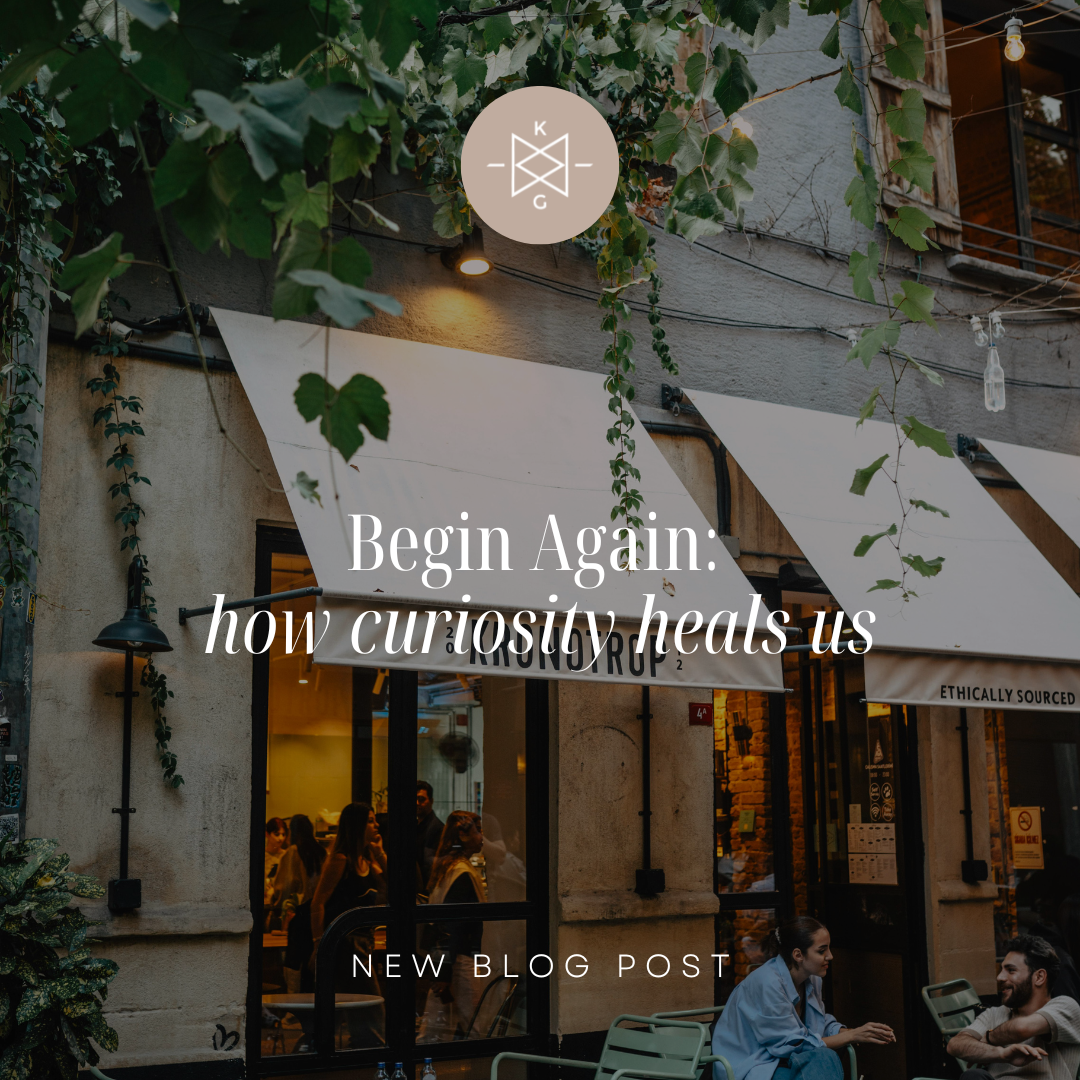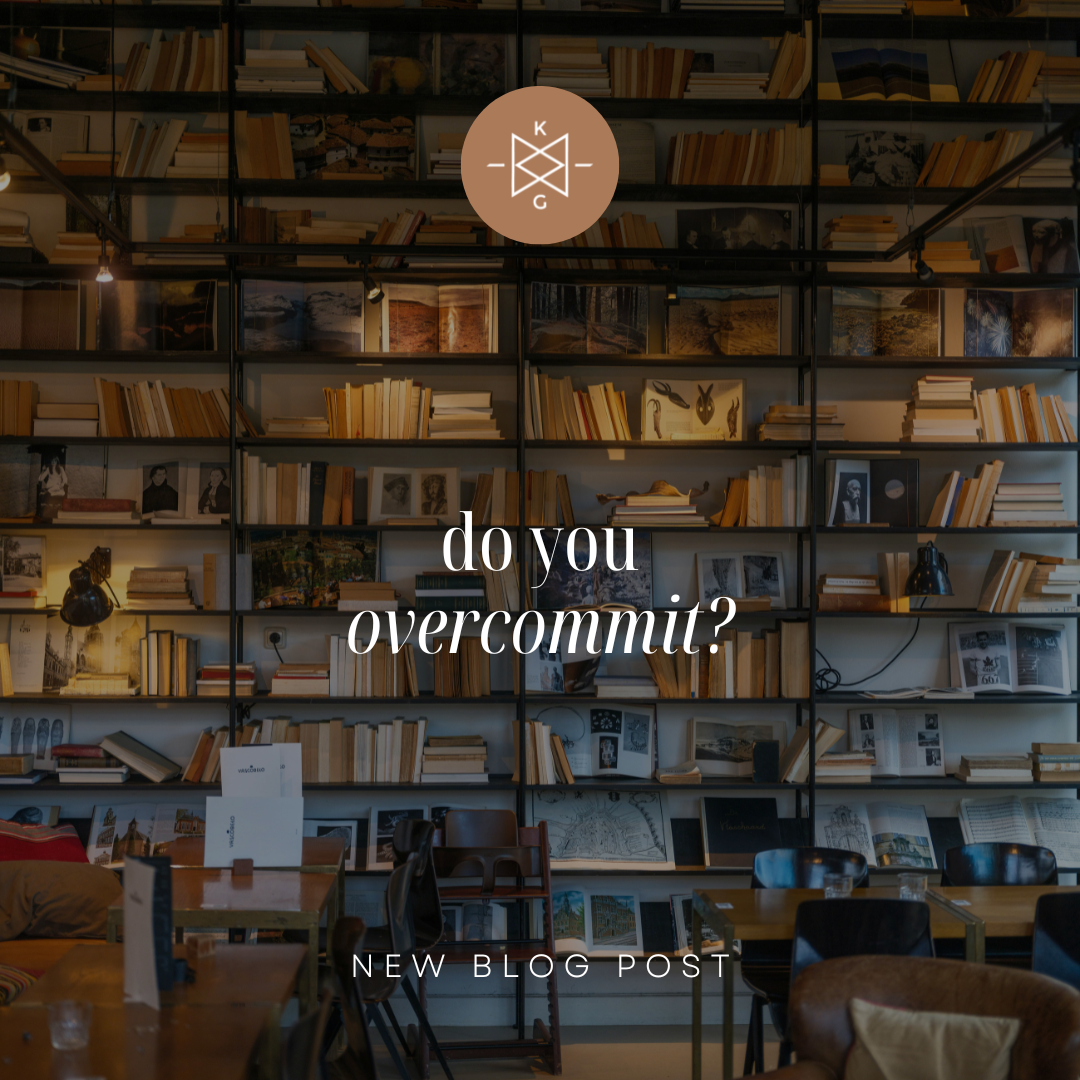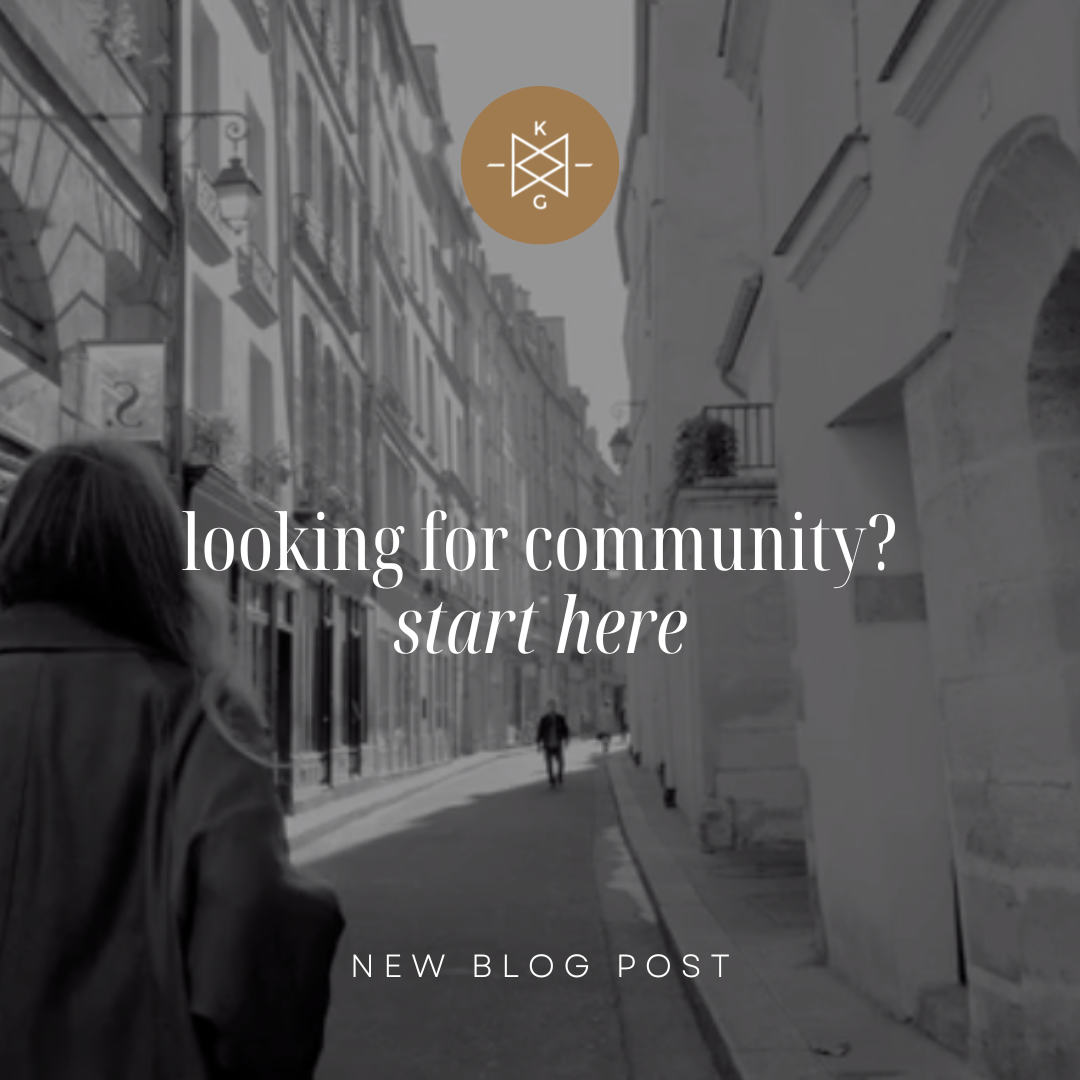
The Blog
Recently Featured
All Blogs
So You Think You Should Talk to Someone? Let's Find the Right Therapist
“Your familiar memories related to your known world “re-mind” you to reproduce the same experiences.”
-Joe Dispenza
As we all continue to be bombarded with stressors and general unrest, now more than ever, it’s important to assess how we’re coping individually and realize when it’s time to reach out for professional help in order to properly care for ourselves.
Between the COVID-19 pandemic and recent protests, it’s easy to see how stress and anxiety can build to extreme levels. But in order to navigate emotional distress, we can’t simply regurgitate past trauma and dysfunction and ignore the path for a new tomorrow.
I believe one of the greatest tools for working through your past, avoiding burnout, and embracing true transformation is psychotherapy. It is incredibly powerful for anyone seeking a deeper sense of understanding and wholeness.
Good therapists most definitely hold space to unpack the often-brutal stories of our past. Yes, to write a compelling story with you playing the hero instead of the victim, it’s necessary to unearth expired lies and lay them to rest. However, good therapists won’t leave you there.
I’ve been a student of Dr. Joe Dispenza’s work for a while now. He explores this topic neurologically and absolutely nails it. Check this out:
“The stronger the emotion that we feel from some external event in our life, the more altered we feel inside of us as a result of that condition outside of us and the more we pay attention to the cause. The challenge is, every time we think about that trauma, we’re producing the same chemistry in the brain and body as if it was happening again. What that does is it activates a survival gene. And when you’re in survival, what you want to do is make sure that that doesn’t happen again. “
When we lock into this type of survival mode, we often forecast worst-case scenarios. Guess what? Our brain doesn’t know the difference between the imagined state we create and reality. Therefore, we stay trapped in that old victim mentality and it tends to play out over and over again moving forward.
Here’s my point: therapy often doesn’t work because we spend so much time talking about our past to the point we are literally reliving it. Where focus goes, energy flows, therefore creating a habit of attention so strong and involuntary, it becomes nearly impossible to create new life-giving possibilities and successes in our lives. How could we? All our energy is being funneled into past emotions of survival long after the immediate threat is gone.
My approach is different. I’m convinced if we’re interested in creating lasting change, we need an experience to support us as a whole person, not just a cognitive one, from the neck up.
Yes, we need a safe space to tell our stories—100%. Yet we also need an experience of transformation as opposed to a conversation. I believe this happens through daily practices and community.
If you’re ready to dive right in, I’d love to support you in finding tangible breakthroughs. I’m also cooking up some resources that will be available this fall and will support your everyday experience.
Drop me a line. I always love hearing from you.
Love & Gratitude,
Katie
Your Brain on the Enneagram: A Chat with Dr. Jerome Lubbe
“Neuroplasticity tells us that we are capable of change. If we understand the function of the brain, we can improve our way of life.”
-Dr. Jerome Lubbe
Last week, I had the pleasure of interviewing Dr. Jerome Lubbe, an innovative thinker, functional neurologist, and author of The Brain-Based Enneagram: you are not A number, to talk Enneagram and the brain. It was truly fascinating.
The Enneagram stole my heart 14 years ago, but neuroscience and specifically, neuroplasticity came in hot on my radar in 2015. It was around then that I started studying trauma and its effect on our brains and bodies.
You may be wondering what the heck the brain has to do with the Enneagram. And that would be fair. That’s why I’m excited to unpack it a bit here today.
According to Dr. Jerome:
“Neuroscience tells us that our brains are plastic. They can and do change. Brain anatomy reveals that our operating system is composed of three primary components which mirror the structure of the Enneagram:
Brain-stem (instinct triad),
Right hemisphere (intuition triad), and
Left hemisphere (intellect triad).
Functional Neurology shows us how to target areas of the brain in order to physically improve the efficiency of the distinct natures of our identity.
The Enneagram integrates seamlessly. It provides language and definition for the process of development. It opens channels for growth by connecting values and expressions to brain function. It offers a guide for increasing physical, mental, and emotional efficiencies by practically implementing effective methods at effective times in effective ways. The Brain-Based EnneagramTM empowers every human being on the planet to engage with the brain, heal and rebuild after trauma, encourage and strengthen efficiencies, and nourish the relational, integrated nature of our whole identity.”
Simply stated, understanding how our brains work and develop habits of attention, thought, and emotion over time directly affects our behaviors and the arc of our wellbeing and experienced reality. When you integrate this knowledge of the brain with the effective self-understanding tool of the Enneagram, you are able to understand how you got where you are and can begin putting into practice a new, empowered way forward.
Sure, knowledge is power. However, once we are able to implement tools (the Enneagram) with this knowledge, power translates to growth and transformation.
Something I appreciate about Dr. Jerome’s approach to the Enneagram is his advocacy in our capacity for all nine types. He provides in his extensive research and testing that we can’t be reduced to one number. Instead, we have fluid elements of all nine that ebb and flow with life’s unfolding. This allows for the complexity of the human identity and is a sigh of relief to the boxy, stereotypical reign of type.
As I like to say, we have a dominant type (in my case, a four), yet also have strains of each of the other eight in my Whole Identity Profile, as he has pioneered.
The best part of all of this is that Dr. Jerome’s book The Brain-Based Enneagram: you are not A number, releases today! His personal journey, breadth of work, and available resources for us is simply stunning. I hope you’ll check out his book, especially if you’ve experienced frustration around knowing your type!
Love & Gratitude,
Katie
P.S. Tune in for my upcoming Instagram Live chat with singer/songwriter/podcaster, Seth Abram this Thursday at 11 am CT!
Shifting Shadows: Doing the Work of the Enneagram
“What you resist, persists.”
-Carl Jung
I grew up in the crown jewel of the deep south, Mobile, AL. We did many strange things like take ballroom dancing in fifth grade. It was hands down the most awkward thing I’d experienced until then, and I’ve always felt at home on a dance floor.
This was different though. Kids from a couple of neighboring schools would gather on a Thursday night at 5 o’clock in a big gymnasium at St. Ignatius Catholic church and learn all the old-school couples dances like the fox trot, waltz, and others I’ve purposely erased from my memory. The most unbearable part of it wasn’t learning the dances, it was learning the dances with the boys. They were hyper, smelly, and had no rhythm. They also thought they were beyond cool.
My favorite part of the night was when I spotted my mom’s minivan headlights in the carpool line. She’d swoop in and pick me up and we’d proceed to Checkers for the long-awaited chocolate milkshake(s). I had to take the edge off somehow.
Learning to dance with our shadow, or shameful parts can feel just as unpleasant. They are those parts of us that we’d rather not talk about. Early on, we learned to hide them from the world around us for acceptance—for survival. They are the parts of you that if someone saw, they might ultimately reject. You may be found out…and deemed unloveable.
What are the shadow parts you’d rather forget about? Is it depression, body shame, singleness, financial troubles, or even sexual trauma as a child? Whatever they are, much like the smelly boys at ballroom, we’ve got to learn to lean in, let go, and learn to dance with them.
The Enneagram is all about integration. The less compartmentalized, or fragmented we are, the more integrated and whole we will become. Just as we are made up of hundreds of different body parts, muscles, and organs, we also have so many different parts of our emotional, relational, and creative beings.
Often times in therapy sessions with clients, these parts come up. Take anxiety for example. Anxiety is an emotion or part of us that can be immobilizing. We often deal with it by numbing, fixing, or running from it. Anxiety is really just a shadow part of us that needs compassion and understanding just like, say, the creative part of us. When we stuff our anxiety and try to avoid it, we really just give it more power and as a result, create imbalance.
What might dancing with this anxious shadow look like? Well, first of all, we must listen to and get to know it. This allows us to cultivate empathy for that anxious part of us. After all, she has been working overtime for a while now to keep us performing, staying safe, and “on the ball.”
Shadow work is really a reckoning with parts of ourselves we’ve misjudged for a long time. The payoff is wholeness—flow. It’s realizing those parts we’ve been hiding for so long aren’t so terrible after all. In fact, they end up being the best parts because they are the most thorough teachers.
That anxious part of you desperately wants you to see her for who she really is: someone who deeply cares about your future, yet may go about it clumsily. She wants you to sit with her, commune with her, and realize the worst thing that can happen isn’t so bad in the end because you have other resilient parts of you that can step in and take over when she needs to sit the next song out.
Take a minute and visualize the part of you that you dislike, a lot. Perhaps you feel guilty about this part or constantly judge it. What does she look like? What is she doing? In the same minute, take one step towards her… then another, and another. You left her alone a long time ago and she feels abandoned, even scared. She knows you dislike her but she desperately longs to know you and play on the same team. She needs you big time.
If this feels completely terrifying, it should. Your brain is freaking out because it has no idea what it’s doing. Hang in there though, this is perhaps the most life-giving work you’ve ever done. Dancing with shadows or smelly boys is probably not on your bucket list. Oh but I bet I know what is…
Freedom.
Love & Gratitude,
Katie
Growing Beyond Your Enneagram Type
“So perhaps the best thing to do is stop writing instructions and get on with the book.”
-Winnie the Pooh
I believe the big reason people sour so quickly from the Enneagram is that it’s so misused by the rest of us. We become Bible-thumping zealots – throwing numbers and jargon around – insensitive to the fact that those around us are not interested or open to being objectified…and reduced. I mean, I get it. I was “that girl” who was an Enneagram evangelist there in the first couple of years: typing people left and right, preaching about growth and disintegration, and passing the plate of approval so everyone would “buy-in.”
And I meant well – truly. It’s been life-changing for me in my process, lending a clean lens to the distorted picture of my life I’d been living out of for so long. Yet it took me years to metabolize the fact that lasting Enneagram transformation speaks for itself. I didn’t have to. The proof is, as they say, in the pudding.
What I didn’t understand then that I do now is this: the Enneagram is not about becoming more like your type. The Enneagram is about living beyond type and into the true you. It’s about identifying your dominant type in order to fully understand it: strengths, weaknesses, motivations, values, and behaviors. But it’s not some Venus fly-trap, swallowing you up, lickety-split, right when you get up close. It’s about identifying the limiting parts of your personality in order to release and re-write the parts that no longer fit.
I’ll never forget my month-long Narrative Enneagram teacher training a few years back in Menlo Park, A. I was expecting the room to be filled with ego and a lot of it. Instead, I remember walking in the first day and much to my surprise, feeing pretty stumped. I couldn’t really figure out anyone’s type (though I couldn’t resist trying!). This group had done some deep inner work, and lot’s of it. They were living beyond their type, beyond the rough and ready edges of personality, into their authentic selves.
When we work with the Enneagram and live in that space, the edges do soften. Relationships run smoother, life’s inevitable stressors become more manageable, and the present moment – more vibrant.
Being reduced to a number is pretty lame. Understanding the truth about how you operate in the world and the story you’ve been living out of is life-changing. Why? Because that means you get to decide if it still serves you. If it doesn’t, guess what?
Yep….you can change it.
When you’re stuck in your type, you’re also stuck in the familiar past – so predictable.
You are so much more than a number, my friend. You are the writer, creator, director, and leading lady of your story, all in one!
Love & Gratitude,
Katie
Why Therapy Hasn't Worked for You
“Your familiar memories related to your known world “re-mind” you to reproduce the same experiences.”
-Joe Dispenza
I hear it all the time. “Yeah, I spent five years in therapy with not much to show for it but a lot less time and money!”
This fires me up. It also makes me sad for those unwilling to try a different approach.
I believe psychotherapy is incredibly powerful for anyone wanting a deeper sense of wholeness and belonging. Yet oftentimes it serves more as a regurgitation of past trauma and dysfunction instead of a place to gain tools of empowerment for a new tomorrow. That said, we tend to learn the wrong skill set in therapy: how to play the victim.
Good therapists most definitely hold space to unpack the often brutal stories of our past. In order to write a compelling story with you playing the hero instead of the victim, it’s necessary to unearth expired lies and lay them to rest. However, good therapists won’t leave you back there.
I’ve been a student of Dr. Joe Dispenza’s work as of late. He explores this topic neurologically and absolutely nails it. Check this out:
“The stronger the emotion that we feel from some external event in our life, the more altered we feel inside of us as a result of that condition outside of us and the more we pay attention to the cause. The challenge is, every time we think about that trauma, we’re producing the same chemistry in the brain and body as if it was happening again. What that does is it activates a survival gene. And when you’re in survival, what you want to do is make sure that that doesn’t happen again. “
When we lock into this type of survival mode, we often forecast worst-case scenarios. Guess what? Our brain doesn’t know the difference between the imagined state we create and reality. Therefore we stay trapped in that old victim mentality and it tends to play out over and over again moving forward.
Here’s my point: therapy often doesn’t work because we spend so much time talking about our past to the point we are literally reliving it. Where focus goes, energy flows, therefore creating a habit of attention so strong and involuntary, it becomes nearly impossible to create new life-giving possibilities and successes in our lives. How could we? All our energy is being funneled into past emotions of survival long after the immediate threat is gone.
My approach is different. I’m convinced if we’re interested in creating lasting change, we need an experience to support us as a whole person, not just a cognitive one, from the neck up.
Yes, we need a safe space to tell our stories—100%. Yet we also need an experience of transformation as opposed to a conversation. I believe this happens through daily practices and community, or the group process.
If this peaks your interest, amazing. You’re in the right place. I’ll be bringing you a bit more on the specifics of this over the next few weeks.
If you’re ready to dive right in, simply hit reply and drop me a line. I always love hearing from you.
Love & Gratitude,
Katie








































